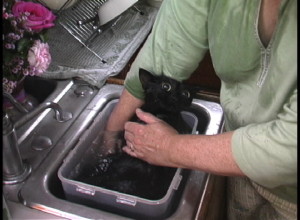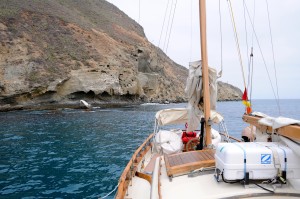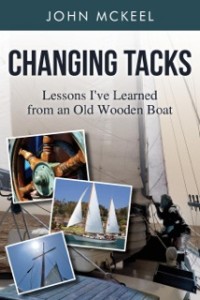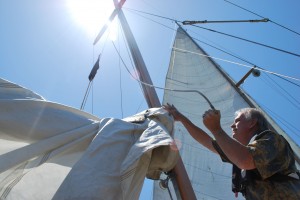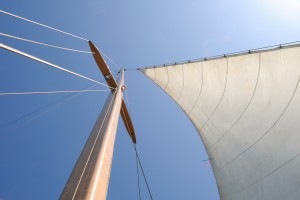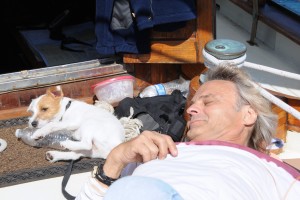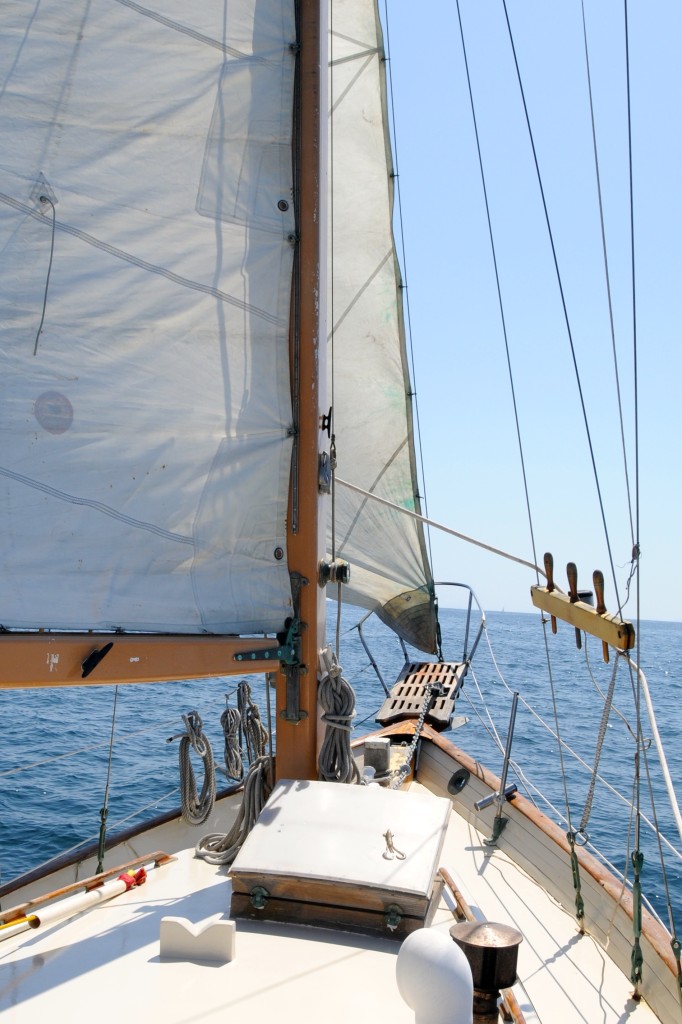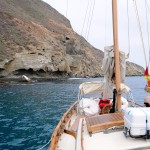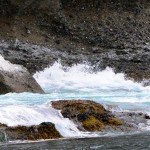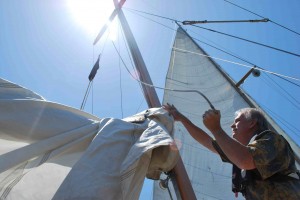
They say the two happiest days in the life of a sailor are the day he buys a boat and the day he sells it. That might be true for some boats, but not for Santa Teresa our old, wooden sailboat. As Jack Aubrey says in Master and Commander, “There’s enough of my blood in the wood to make her a near relative!”
Jan and I have moved to Groton, Connecticut (think “Mystic Seaport” as in Mystic Pizza) to serve a delightful, little congregation with big plans, but it’s too far to bring Santa Teresa with us. It would take nearly six months to sail her through the Panama Canal and up the east coast, or it would cost over $14,000 to truck her there. Neither one is a good option, so after all these years, we had to sell her last weekend to two wonderful new caretakers. (You don’t sell wooden boats. You find someone who will love her and adopt her as we did.)
Today, I am sailing her for my last voyage across San Diego Bay from the Public Docks on Shelter Island back to her mooring ball by the Coronado Bridge. It is bittersweet. People have asked me if we plan on buying another boat. After all, we sold our first boat, a 22 foot O’day named Wanda Sue to buy Santa Teresa, but, if we do, it will take a while. The little church in Groton is going to take all our attention for now. If you’ve ever lost a treasured pet, you understand how we feel. Do you immediately replace her or do you need to grieve a bit first.
As I sit in the cockpit waiting for the last part to arrive to finish the repairs, I am looking her over and reliving some of our adventures from the last twelve years. I think about the first voyage through the Channel Islands and down to San Diego. What vivid memories! Or I treasure all the memories of people we have introduced to sailing. Some of my best memories were just tied up to the mooring ball in the bay listening to music by the light of the oil lamps and dancing with my sweet wife on our tiny ballroom floor in the galley. Yes, there were storms and ghastly mistakes, but those disappear with time and leave us wiser. I think about diving off the cabin top into icy water; climbing back up the ladder and doing it again.
I think about all the lessons God taught us on that boat: faith is leaving the sight of land and following the compass until the island appears on the horizon just as promised. Unity: each of the strands of a rope are terribly weak by themselves, but bound and intertwined, they cannot be broken. Annoying drips need to be attended to immediately before something worse happens. Trust: Be sure of your anchor! Above all there was a feeling of the presence of God as we sailed through the night, our way lit by stars as we were carried along by wind and wave.
Fair winds and following seas Santa Teresa! We will treasure you in our hearts.

